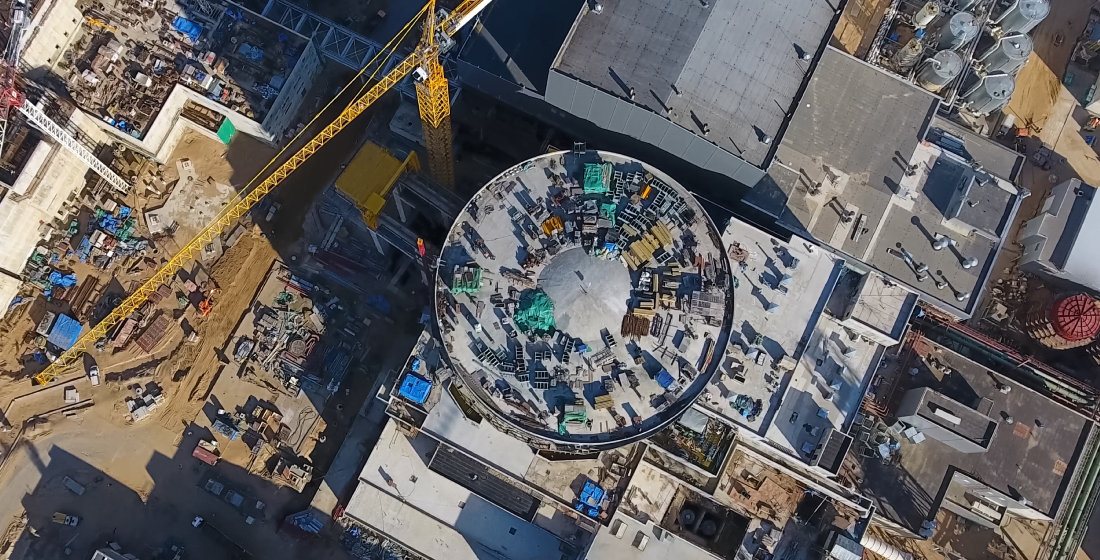The wintry dance of global trade digitisation in 2022: Missing the magic?
There have been steps forward, sideways and back in trade digitisation in 2022. Here we reflect on some of the developments in what has been a choppy year for certain blockchain-based solutions, and a more positive one for digital trade regulation. While comprehensive approaches have been important, there remains no magic switch to make global trade digital, and a challenge of building better mousetraps.

First the good news. International regulation that enables the digitisation of commercial trade finance is making progress. As the UK’s Electronic Trade Documents Bill continues its march into law, it’s time to reflect on what has been an important year for trade digitisation, at least in terms of the regulation that is a necessary condition for change. Although change won’t happen overnight, a large proportion of international trade is regulated under English law.
Digital trade in the US also took a leap on 13 July when the Uniform Law Commission (ULC) passed several amendments to the Uniform Commercial Code (UCC) addressing digital assets, terminology to account for digital records, electronic signatures, and distributed ledger technology, providing rules for electronic negotiable instruments, and clarifying the rules for UCC applicability to hybrid transactions involving both goods and services. The measures still need to be taken up by state legislatures, but the exciting news was that it is a federal solution. The problem in the US had been that there has never been a federal solution to the handling of commercial trade documents in digital form. The UCC in the US already permits electronic documents of title, but promissory notes and bills of exchange must be in written form. The 2022 amendments would effectively allow electronic promissory notes and electronic bills of exchange and also give effect to a governing law clause in the electronic promissory note or electronic bill of exchange.
As Chris Southworth, co-chair of the Legal Reform Advisory Board of the ICC Digital Standards Initiative (DSI) told TXF in July, “The breakthrough is that the US government has now identified a solution which is the UCC and is now actively progressing on reforming the law to enable those documents to be handled across state boundaries.”
“Digitisation is the only way forward in trade finance and it is exciting to see such strong momentum behind this in the US,” says Carl Wegner, CEO of Contour.
And, as ITFA publishes its Uniform Rules for Transferable Electronic Payment Obligations (URTEPO) – on 5 December, a development that is explored in more depth in TXF’s Global Trade Report 2022 – the framework for trade digitisation continues to firm up.
The United Nations Commission on International Trade Law (UNCITRAL) produced the Model Law for Electronic Transferable Records (MLETR) in late 2017 and that became the reference point for how the industry could solve the legal framework problem. Its adoption is still slow. To date seven countries have formally adopted MLETR, and multiple other countries are either considering it or have similar legal frameworks under consideration. Though they have made high level commitments, none of the G7 countries is fully up to speed in using MLETR in their legislative frameworks. However, legislative progress in Germany and France is likely to be significant.
TradeLens at sea – a wider issue of scale
The year has certainly not been plain sailing for trade digitisation for what had been held up as the biggest potential disruptor to trade – blockchain. When AP Moller-Maersk and IBM announced on 29 November that they were scuppering TradeLens, the blockchain-enabled trade platform that first set sail in 2018, it has marked the end of a choppy year for the progress of trade digitisation, at least from the perspective of blockchain-based solutions (and also highlights the ongoing challenges of scaling the use of electronic bills of lading).
“Unfortunately, while we successfully developed a viable platform, the need for full global industry collaboration has not been achieved, says Rotem Hershko, head of business platforms at AP Moller-Maersk in a statement. “As a result, TradeLens has not reached the level of commercial viability necessary to continue work and meet the financial expectations as an independent business."
This is despite a McKinsey analysis of the opportunity at stake. Digitalising the bill of lading (McKinsey estimates this accounts for 10-30% of trade documentation costs) could unlock more than $15.5 billion in direct benefit to the shipping ecosystem and up to $40 billion in increased trade. At SIBOS Amsterdam in September, the dismal statistics regarding the uptake of electronic bills of lading (eBL, a product, it was pointed out that has been around in one form or another for nearly a quarter of a century) were laid out. A sobering 1-2% of cargoes use eBL.
“We should stop looking at each other to go first,” said one shipping association head on stage at SIBOS. “Technology is not a hurdle, and legal is not a hurdle, standards are great, but they need to be adopted.” Even so, when asked from the floor whether BIMCO and Digital Container Shipping Association (DCSA) and other shipping associations should embrace mandatory standards/use standardised rulebooks to accelerate the use of electronic solutions, at least one of the associations’ answer was “mandatory would be a disaster” as it would not be commercially attractive.
Winter was coming (for closed-end blockchain) for a long time
The challenges for eBL aside, back in June, We.trade, a bank-owned consortium shut up shop (as did HSBC’s own Serai). We.trade was joint-venture company, owned by 12 banks (licensed by 16) and IBM and was one of the first enterprise blockchain consortiums to offer trade finance. We.trade itself evolved from a project called Digital Trade Chain (which merged with parts of the Batavia Consortium). Digital Trade Chain started with nine banks in 2017 and was rebranded as We.trade in October 2017. In 2019 it became operational with deals run through a digital trade platform based on the Linux Foundation's Hyperledger Fabric and IBM blockchain platform.
The fact that We.trade didn’t amend flows before putting them on the blockchain is important to remember. That lift and shift came almost straight out of the failed Bank Payment Obligations (BPO) playbook. Indeed, the ‘closed’ membership group-style model that required users to sign up to We.trade’s rulebook and use its contracts was criticised as being anachronistic and another inefficiency that deterred smaller users who prefer single bank interfaces (often with their main bank) rather than having to run parallel systems. The combination of a smart-contract-based product with its own proprietary blockchain solution created a closed-loop system and impeded interoperability.
At the time, others had a similar sense of déjà vu about the technology. "You’ve got to start with the customer experience and work backward for the technology." That quote from Apple founder Steve Jobs [which I received as a meme in relation to the story] is apposite given the recurrent issue of solutions looking for problems.
That ‘walled garden’ approach has been challenged [see CGI’s Patrick DeVilbiss’s analysis in TXF’s Global Trade Report 2022]. In the summer, industry wagons circled, particularly with the better funded solutions, and some distanced themselves from the perception that their strategies were purely blockchain-based.
Marco Polo Network reportedly also stepped back from its blockchain payment commitment offering. Scaling, collaboration and long term funding all remain challenges.
Blockchain platform Contour asserted its strength and bought the We.trade rulebook in September. Contour had announced a collaboration with the (now defunct) TradeLens back in May. Wegner tells TXF, “TradeLens had a good team of people who shared in the company’s bold vision of making trade more efficient, but this news [of the platform’s closure] exposes the challenges of collaboration between big corporations and the industry. We remain hopeful for more widespread adoption of the eBL in the future, as digital innovation must be embraced in order to move forward.”
Consolidation and positive pockets of development
Other trade bankers remain positive for trade finance products as a whole. “All this blockchain noise is a bit of a red herring,” say one. “Winter is coming? Winter is not always winter for trade finance – winter equals risk, and risk mitigation is what we’re here for – the combination of rates, inflation, uncertainty, mean trade finance looks attractive.”
On 1 December, Swiss-based Komgo, originally purely a blockchain-based platform for commodity trade finance, announced it has bought GTC, a Canada domiciled trade finance platform, to create what it describes as ‘the world’s largest platform for digitalisation of trade finance’. That consolidation has been widely welcomed. The companies assert that together they provide trade finance digitisation solutions to more than 120 multinationals and (in excess of) 11,000 subsidiaries, while GTC offers multibank trade finance solutions for corporates. "Solutions offered by both companies are complementary and cover the complete range of payment instruments used in international trade, starting from detection of fraudulent invoices to automation and management of letters of credit, bank guarantees, documentary collections, integrated with a trade finance marketplace," GTC's chairman of the board, Jacob Katsman said in a statement.
Meanwhile, MonetaGo has underlined its focus on digitisation outside the realm of blockchain-based solutions. It scored a win as the first (and so far, only) trade finance API on SWIFT, announced in late October. On 2 December its Trade Financing Validation Service was launched into production to the more than 11,000 institutions on the SWIFT network. The anti-duplicate financing system is designed to be interoperable across markets, companies and platforms and aims to reduce trade finance fraud.
Build it/build a better mousetrap, but will they come?
“I think we have to be realistic in understanding that trade digitisation won’t be achieved with the flick of a magic switch: it is a long and complex process,” Luca Castellani, legal officer at UNCITRAL cautioned in the summer. “MLETR removed one major stumbling block but we need a lot of other components, including a robust ecosystem and onboarding regulators. At the same time, Article 7 UCC and its underlying notions shared with MLETR such as control have significantly influenced other new Articles of the UCC (for example on digital assets), and UNCITRAL is starting work on a new project, on a legal instrument on negotiable multimodal transport documents, that will build significantly on MLETR. In short, the impact of MLETR on trade digitisation may be deeper than it seems, but at the same time may also be less immediate and apparent than one may wish.”
The passing of UK Electronic Trade Documents Bill is scheduled to come into force by the middle of 2023 on current plans. In anticipation of the changes, the priority now is to inform the market and support companies to get ready to go digital. With the Commonwealth countries using the same pieces of foundational law, the Bills of Exchange Act and Carriage of Goods by Sea Act, they should, theoretically be able to adopt the new bill wholesale or with minor changes. The potential is there to accelerate legal reform faster than any other global network.
Hopes remain that with the facts that the US dollar, and (to a lesser extent) sterling, have outsized importance in international commerce and settlement, and that US and English law has outsized importance as a basis for contractual trading terms, the regulatory developments will be a springboard.
With better frameworks in place, standards evolving and laws changing, industry will need to take the next steps to adopt. Needless to say, there will have to be a big push, and if the pandemic didn’t galvanise corporates to go digital on cross border trade, then what will?
Fintechs are holding out that the logic of the opportunity for trade finance digitisation remains very compelling. "Fintechs can automate a lot of trade finance processes and reduce cost, as the centre for trade finance is expensive to manage. There's an opportunity not only to delight the customer with better service, but offer new products in the future," says Wegner.
The difficulty remains that if anyone thinks ‘build it they will come’ – attributed to Kevin Costner in the film ‘Field of Dreams’, or ‘build a better mousetrap and they will beat a path to your door’ –attributed to Ralph Waldo Emerson – applies to trade finance digitisation, they must learn from many decades of experience, and, in the recent cases of closed-end blockchain digitisation, the real risk of getting nipped by the high-falutin’ mousetrap.
This article first appeared in TXF Global Trade Report 2022. Download the full report here





